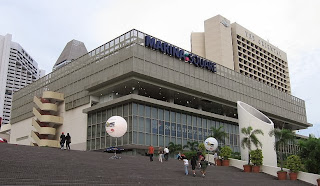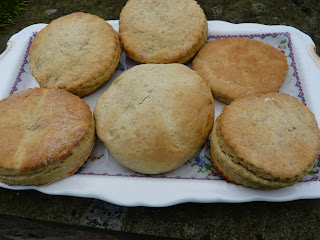I was chatting with a UK teacher friend about going back to school this autumn, and it suddenly brought back a memory of my own secondary school in the UK. It was a school founded in the 1600's. It had a certain Hogwarts feel to it now I look back to my own school years. (But we didn't study anything quite as interesting as magic...)
I actually quite looked forward to the start of Autumn term - the 'new year' back after a long summer break of two or more months. In some ways autumn in temperate countries can bring a melancholy of 'things coming to an end' - the change of the light, the colour of the leaves on trees, the shorter, and colder days - all signals that summer has finished. But with a school year starting, it was also the signal of new things. We might have something cool like a new stationery set to use, and we would of course be in a new classroom, sometimes with a few new schoolmates too.
All this randomly reminded me of the big conker tree outside the building we were housed in when I was 11-12 years old. I don't know if kids do this in other countries, but conkers - the fruits (nuts?) of the Horse Chestnut tree - used to be collected and sometimes used in games by UK children.
Like I said, you find conkers on a Horse Chestnut tree. But in fact they are poisonous to eat (I think for humans and other animals including, ironically, horses). Despite the name, the tree is not a sibling of the 'Chestnut' tree, which produces slightly similar looking fruits ..which are edible and quite nice roasted on a bonfire or used in cakes!
It was a big deal to find the biggest conkers, and one game British children played involved drilling a hole through the nut, threading a string through it, then bashing it against a rival conker. The aim is to crack your opponent's conker, then you win! A conker that has defeated one rival nut is called a 'one-r', two nuts a 'two-er' etc. I am not sure if 'Conkers' is still played much by UK kids, it is an old fashioned game, and fairly rare during my early years in a rural UK town. But there is a World Conkers Championship (which adults also enter) held annually in England today! I think this is a modern festival.
And remember!
 |
| The conker or Horse Chestnut - do not eat this! |
 |
| The slightly fuzzier Chestnut - quite tasty when cooked! |
Credits for conker game photos: Bookdrum.com; Woodlands Jnr School in Kent.
.jpg)









.jpg)
.jpg)
.jpg)
.jpg)

.jpg)
.jpg)
.jpg)
.jpg)





.jpg)
.jpg)








.jpg)
.jpg)
.jpg)
.jpg)
.jpg)
.jpg)
.jpg)
.jpg)
.jpg)
.jpg)
.jpg)
.jpg)
.jpg)
.jpg)
.jpg)
.jpg)
.jpg)
.jpg)
.jpg)
.jpg)
.jpg)
.jpg)
.jpg)
.jpg)
.jpg)
.jpg)
.jpg)